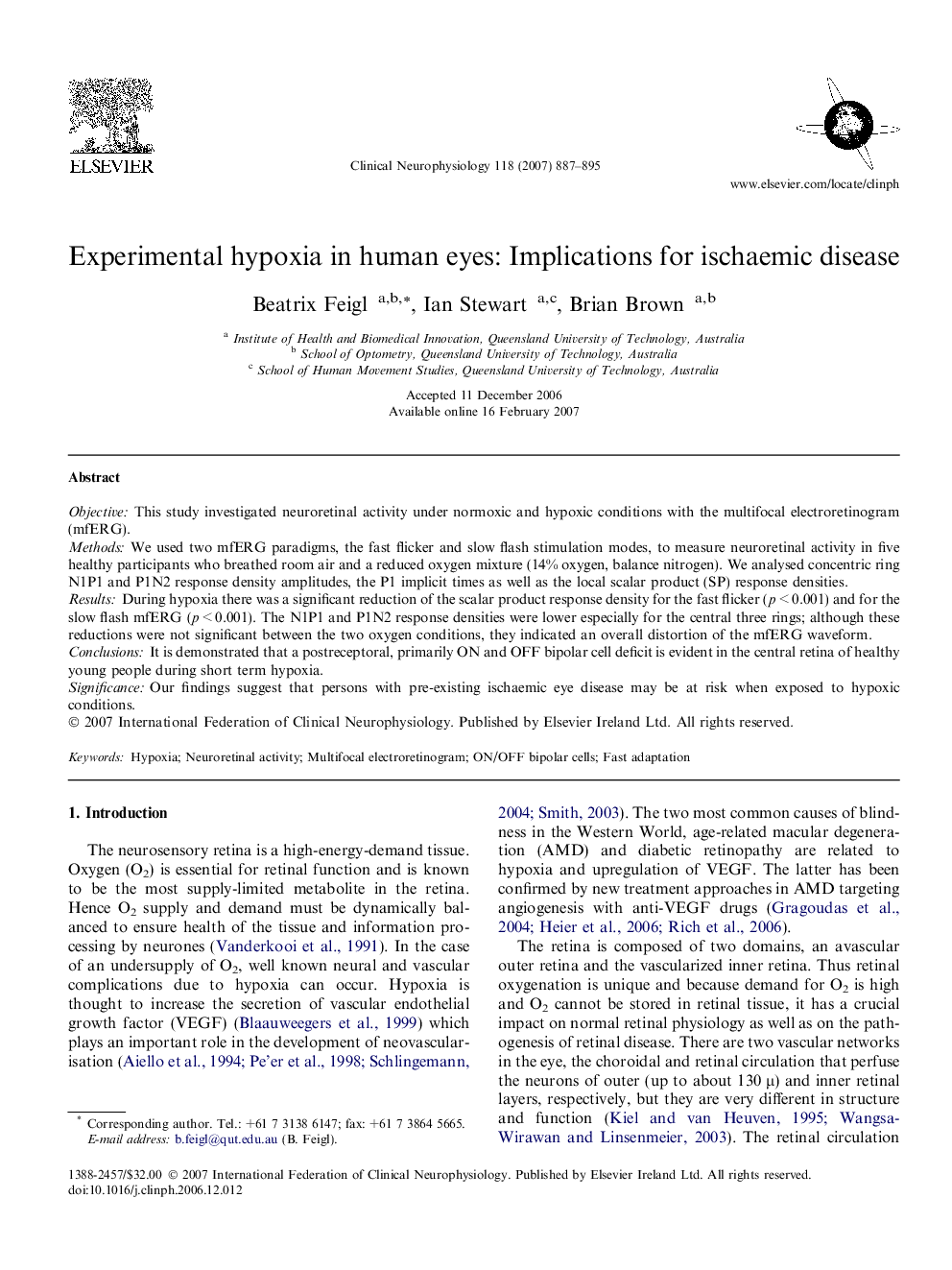| کد مقاله | کد نشریه | سال انتشار | مقاله انگلیسی | نسخه تمام متن |
|---|---|---|---|---|
| 3047919 | 1185069 | 2007 | 9 صفحه PDF | دانلود رایگان |

ObjectiveThis study investigated neuroretinal activity under normoxic and hypoxic conditions with the multifocal electroretinogram (mfERG).MethodsWe used two mfERG paradigms, the fast flicker and slow flash stimulation modes, to measure neuroretinal activity in five healthy participants who breathed room air and a reduced oxygen mixture (14% oxygen, balance nitrogen). We analysed concentric ring N1P1 and P1N2 response density amplitudes, the P1 implicit times as well as the local scalar product (SP) response densities.ResultsDuring hypoxia there was a significant reduction of the scalar product response density for the fast flicker (p < 0.001) and for the slow flash mfERG (p < 0.001). The N1P1 and P1N2 response densities were lower especially for the central three rings; although these reductions were not significant between the two oxygen conditions, they indicated an overall distortion of the mfERG waveform.ConclusionsIt is demonstrated that a postreceptoral, primarily ON and OFF bipolar cell deficit is evident in the central retina of healthy young people during short term hypoxia.SignificanceOur findings suggest that persons with pre-existing ischaemic eye disease may be at risk when exposed to hypoxic conditions.
Journal: Clinical Neurophysiology - Volume 118, Issue 4, April 2007, Pages 887–895